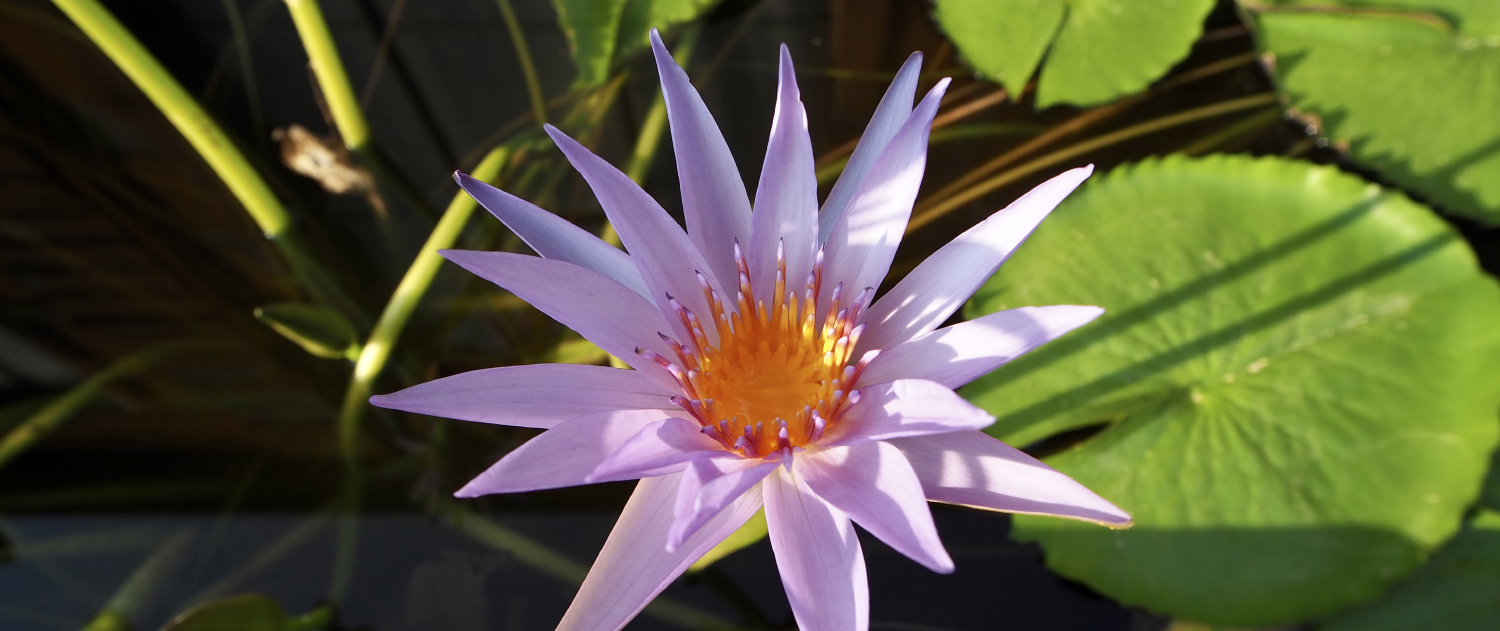Botanical Garden of Florence
Aquatic plants
Introduction | Acquatic | Citrus fruits | Trees | Wild edible plants | Araceae family | Wild shrubs | Begonias | Bromeliads | Carnivorous | Cycads | Grasses | Medicinals | Tropical orchids | Palms | Pteridophytes | Roses | Serpentinophytes | Succulent plants | Exhibits
The collection is spread in different areas of the Botanical Garden. It aims at showing not only the strategies adopted by plants to live in such a special environment as the aquatic one, but also the importance of wetlands, which are one of the most fragile and threatened habitats, for the conservation of biodiversity.
The presence of aquatic plants or plants linked to wetlands, dates back to 1884, when a seed of Taxodium mucronatum was planted in the Botanical Garden. The seed came from the Botanical Garden of Palermo and the tree derived from it has been now included in the List of Monumental Trees of Italy. In 1937, two specimen of bald cypress, Taxodium distichum, were introduced and can be admired in the flowerbeds in front of the Cold Greenhouse.
In addition to trees, there are many specimen in the Garden belonging to the group of hydrophytes, plants adapted to live completely or partially underneath the water surface, which can have either completely floating roots or roots deeply penetrating into the soil.
These plants show specific adaptations such as parts (leaves or petioles) that float thanks to the presence of auriferous tissue, large leaves to enhance photosynthetic activity with stomata concentrated on the upper page, laciniate or ribbon-like submerged leaves to offer less resistance to currents, respiratory roots that emerge from the water , allowing gas exchange to the submerged tissues, small and very light leaves that ensure buoyancy and maximum mobility.
In the Garden there are several examples of hydrophytes located in different areas: in the Warm Greenhouse there are tropical and subtropical species such as mangroves and papyruses, while outside there are several pools dedicated to the cultivation of hydrophytes.
One pool, long and narrow, is located right in front of the Warm Glasshouse and is dedicated to water lilies, with specimen of different species and varieties, among which the deep purple bloom of the Blue Lotus of the Nile (Nymphaea nouchali) stands out.
The lotus flower (Nelumbo nucifera), on the other hand, has an entire pond dedicated to it in the area called Laghetto, near Via La Pira. This plant is considered sacred in its native range, which corresponds to central-eastern Asia. The species, introduced in Europe for ornamental purposes, is now spread in many different temperate climate areas and can become invasive; in Tuscany it may be admired in S. Rossore and Massarosa.
The large circular central fountain also hosts water lilies, both rustic and tropical; since summer 2023, there is also the magnificent Victoria cruziana, a giant tropical water lily of South America, grown from seeds donated by the Botanical Garden of Padua.
On the other hand, the Montagnola section is dedicated to the native hydrophytes of Tuscany: here, more than 30 species taken from the wild during missions carried out by Botanical Garden technicians - in collaboration with the curator of the Italian Central Herbarium Lorenzo Lastrucci can live at their best in various tanks. Many of the entities present are threatened species such as Cladium mariscus, a herbaceous perennial, Symphytum tanaicense, Trapa natans and Nymphoides peltata.
Hygrophilous trees, which prefer flooded or particularly water-rich environments, such as black alder (Alnus glutinosa), white poplar (Populus alba), ash (Fraxinus angustifolia subsp. oxycarpa), oak (Quercus robur) and white horn-beam (Carpinus betulus) vegetate on the edges of the ponds.
These species are typical of hygrophilous thickets; this habitat is becoming more and more fragmented and fragile. It provides shelter, a place of reproduction and food for a great number of animal species, and play a fundamental role in mitigating river erosion phenomena.
In Italy, wetlands are among the most threatened habitats and are endangered by anthropic pressure, pollution and the introduction of invasive alien species; as a result, the plant species that populate them are increasingly rare and at risk of extinction. Their cultivation in a Botanical Garden represents a tool for ex-situ conservation, as well as a means of disseminating knowledge and raising awareness of the urgency of actions to protect and care-taking of these precious environments.


